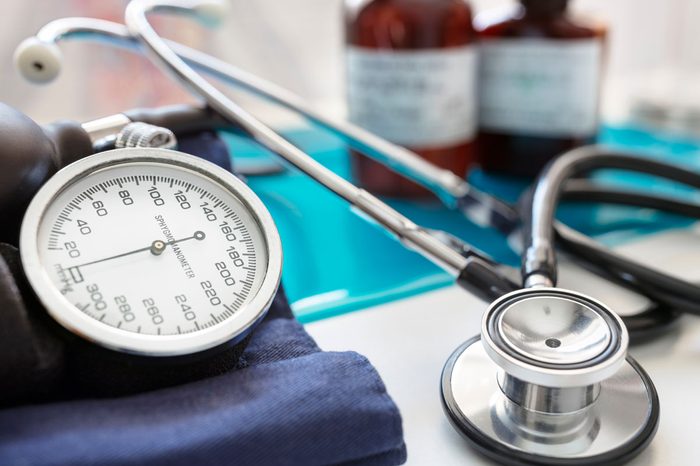
Get your blood pressure under control
Margaret Kinninmont was in a bad mood when she arrived at work one morning in December 2013 because graffiti had been painted on garages near her home in Glasgow, Scotland. “I was in a right temper,” said the 58-year-old executive secretary. Her boss, professor Rhian Touyz, director of the Institute of Cardiovascular and Medical Sciences, University of Glasgow, looked at Margaret, red in the face as she vented about the ugly art. “Let’s take your blood pressure,” she said.
Touyz is a world-leading hypertension expert and the current president of the International Society of Hypertension (ISH). Part of her role is to educate the public about the serious danger of uncontrolled hypertension. “High blood pressure is the main risk factor for disease and death in the world,” she says. “It causes heart disease, kidney failure, strokes, and now there is evidence it causes vascular dementia.”
Moreover, roughly one in every three people over 18 in Europe has high blood pressure, defined as readings that are higher than 140/90 mmHg. Many do not know they have it, and of those who do know, up to 50 percent do not have it controlled. “Hypertension is a silent killer,” warns professor Robert Fagard, a hypertension expert from Leuven, Belgium. The first time that many people become aware they have it “may be a debilitating or even fatal cardiovascular event.” That is why it is so important that individuals have their blood pressure regularly monitored and that they work with their doctors to treat any hypertension.
Up until that December day, Margaret Kinninmont had never knowingly suffered from hypertension herself. But her first reading was dangerously high: 188/100 mmHg. Margaret tried to relax and breathe deeply. Her blood pressure was taken again. Still much too high.
A short while later, a third reading was still too high.
Those high readings were the start of a year-long journey to bring her blood pressure back into the healthy range. It began with a prescription for medication, and then regular readings for over the months ahead. Margaret bought a home blood pressure monitor and documented her blood pressures herself. The first medication caused her ankles to swell, so she was switched to another. The dose and the time of day she took the drug were adjusted in order to get her blood pressure back under 120 mmHg with no side effects.
Moreover, she made a concerted effort to eat more fruits and vegetables and increased her regular exercise. Now more than a year later Margaret has lost more than 26 pounds (12 kilograms), her blood pressure numbers are back in the healthy range of 115/79 mmHg, well controlled with a low dose of medication. She is no longer breathless when she climbs the stairs with her young granddaughter. “I feel better than I have in years,” she says.
Margaret’s story is exactly what should happen when an individual is diagnosed with high blood pressure.
Not only did she get the right treatment, but “she has done such a fantastic job of taking control of her own health,” says professor Touyz. Better patient education and engagement when it comes to controlling hypertension is a huge need, especially in Europe. A number of research studies have found that Europeans have poorer blood pressure control than patients in North America. Professor Thomas Kahan, chief of cardiology at Danderyd University Hospital, Stockholm, notes that 35 percent of patients newly started on hypertension medications discontinue them within two years. And many who are referred for what is thought to be treatment-resistant hypertension are found not to be taking their medication at all.
Hypertension experts in Europe are very concerned. In recent years the European Society of Hypertension, the European Society of Cardiology (ISH) and the UK National Institute for Health and Care Excellence have produced highly detailed guidelines to improve the diagnosis, treatment and long-term control of hypertension. “It is mandatory that physicians convince patients of the benefits of good blood pressure control in the long run,” says professor Fagard.
Here are 10 facts you should know about hypertension.
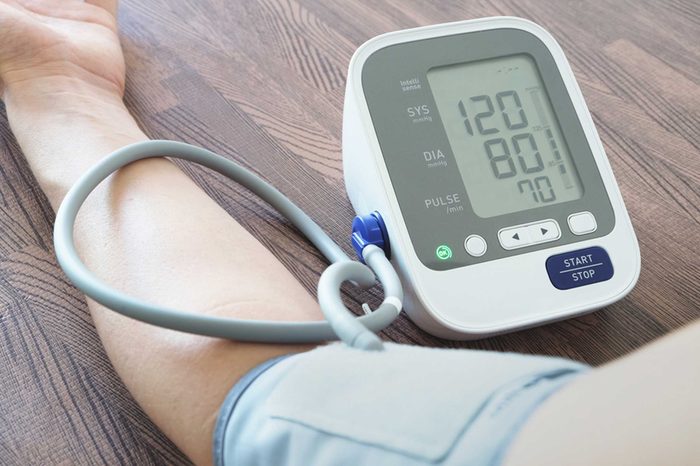
1. How does hypertension do its damage?
Just as a garden hose that is under too much pressure can develop bulges and blow outs, and be too strong when blasted on delicate plants, blood flowing through our blood vessels under too much pressure can weaken blood vessel walls, cause bulges and ruptures, as well as damage delicate organs that receive the flow. That is why hypertension is linked to strokes, heart attacks, aneurysms, eye and kidney damage and more. It also forces the heart to work harder, contributing to eventual heart failure. (Also, you may want to check out these heart attack prevention tips.)

2. What causes high blood pressure?
In 95 percent of cases, there is no direct cause. This is called essential hypertension. But obesity, lack of exercise, high alcohol consumption, high salt consumption, stress and family history are all risk factors. As well, as we all age, our blood vessels become stiffer, raising our blood pressure. In about five percent of cases, the high blood pressure is actually caused by another illness or medication. This is called secondary hypertension. Thyroid disease, polycystic kidneys, adrenal gland problems or other rare diseases can cause hypertension. Medications and supplements that are known to raise blood pressure include oral contraceptives, cold and migraine medications, non-steroidal anti-inflammatory drugs for pain relief and herbal supplements like St. John’s Wort.
Unbeknown to many, a compound in licorice root, found in licorice-containing foods, candies, teas and herbal products, can have a very potent impact. As little as a half a cup of licorice tea a day can be enough to raise blood pressure. “It is absolutely critical that when a doctor assesses a patient we do everything we can to exclude secondary forms of hypertension before a diagnosis of essential hypertension is made,” says professor Touyz.
(Psst: These foods can help lower high blood pressure naturally.)
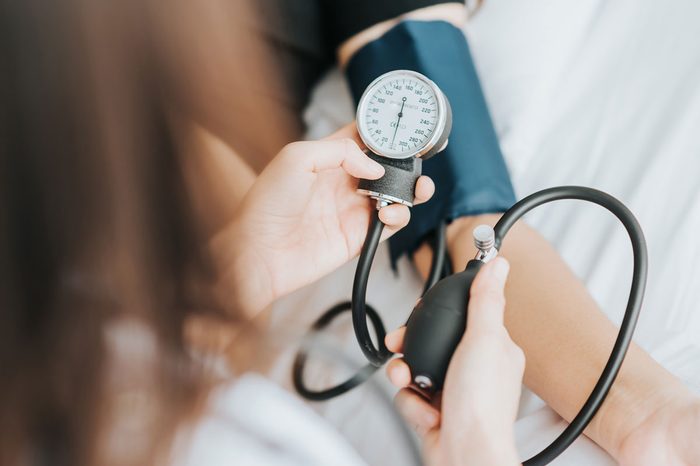
3. How is it measured?
The device is called a sphygmomanometer. With the arm supported and the patient keeping still, a cuff is inflated around the upper arm, at the level of the heart. In the manual method, the doctor pumps up the cuff until the blood flow in the arm is stopped. Then watching the dial or column of numbers, the doctor slowly releases the pressure on the cuff until, with a stethoscope, he or she hears the first tapping “Korotkoff sounds”—representing the top number, or systolic pressure. The pressure is released until all sounds disappear—representing the bottom number, or diastolic pressure. Accurate machines are now available to take these measurements automatically.
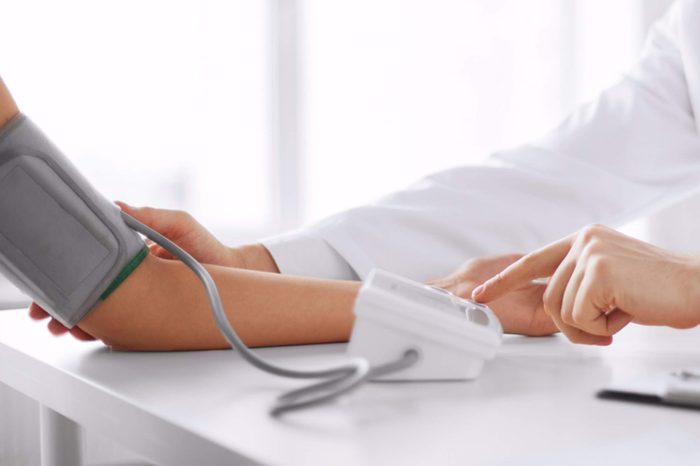
4. What do the two numbers mean?
The systolic pressure is the force exerted on your blood vessel walls when your heart beats and squeezes out the blood. The diastolic pressure is the force exerted on your vessels when the heart relaxes between beats. Optimal blood pressure is considered numbers at or under 120/80 mmHg. As blood pressure rises over 140/90 mmHg you have hypertension. “Everyone should know their own blood pressure numbers,” says professor Touyz.
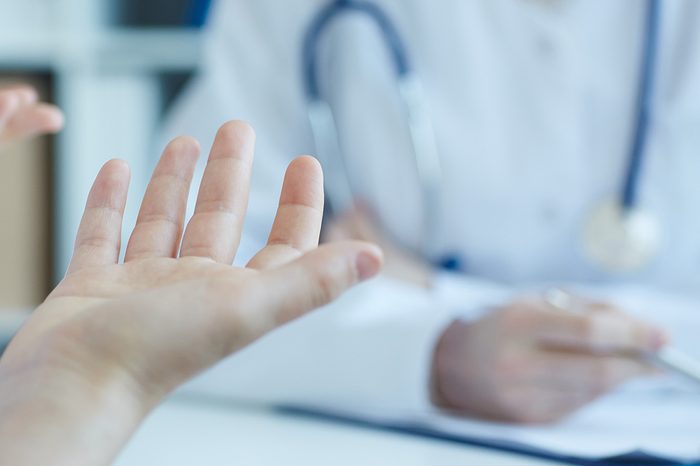
5. How often should blood pressure be tested?
The guidelines recommend tests at least once every two years. But most patients have their hypertension detected when they are seeing the doctor for something else. “That’s why it is so important that you see your doctor for general check-ups,” notes professor Touyz. She and others believe that accurate public monitors should be much more available in Europe, as they are in North America, so that individuals can check their pressures themselves then go to their doctor if their numbers are raised.
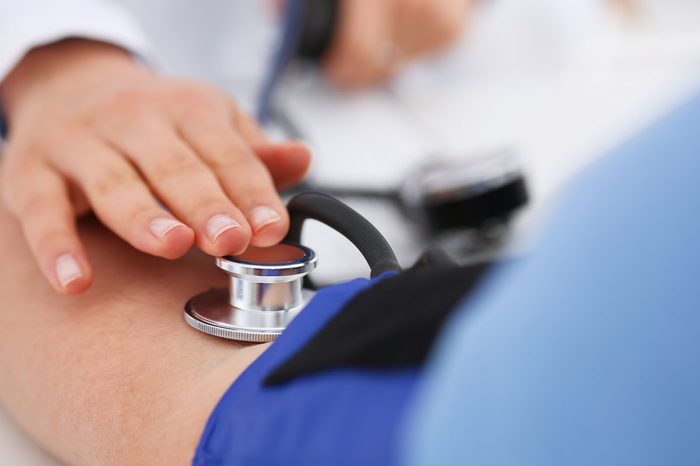
6. How many readings should you have?
All the guidelines recommend that doctors have patients sit quietly for the first reading and then take one or two more, one to two minutes apart, then averaging those measurements, particularly if the readings are high. If the hypertension is in the mild to moderate range, a follow-up appointment should be made to take readings again. “If it is repeatedly above 140/90 in the doctor’s office and 135/85 at home, then the patient would be considered as having hypertension,” says professor Touyz. About 20 percent of us have abnormally high readings when blood pressure is taken in the doctor’s office but then our readings are fine at home. That’s called white-coat hypertension. On the other hand about 10 percent have normal readings at the doctor’s but are actually hypertensive at home. That is called “masked hypertension” and may go undetected for years.
Paul Robert, an editor in the Netherlands, was just 19 when he found out he had white coat hypertension. The doctor taking his BP was startled that for a young man his reading was up well past 140. So, 10 minutes later it was taken again and it was normal. “It happens every single time I have my blood pressure taken,” says Paul, now 59. By the time he was 40, however, he had developed true hypertension, as the majority of the people with white coat hypertension eventually do. He decided to buy a home monitor, so he could keep track. Working with his doctor, his blood pressure is now well controlled with a combination of drugs. But his first reading is still always too high. Dr. Karena Hanley, an Irish family physician in Donegal who is active in family doctor education, says the doctors in her practice always send patients with potential hypertension home with a semi-automated monitor. “We ask them to take two readings in the morning and two at night for five days. We average the last 15 readings and on that we base the hypertension decision.”
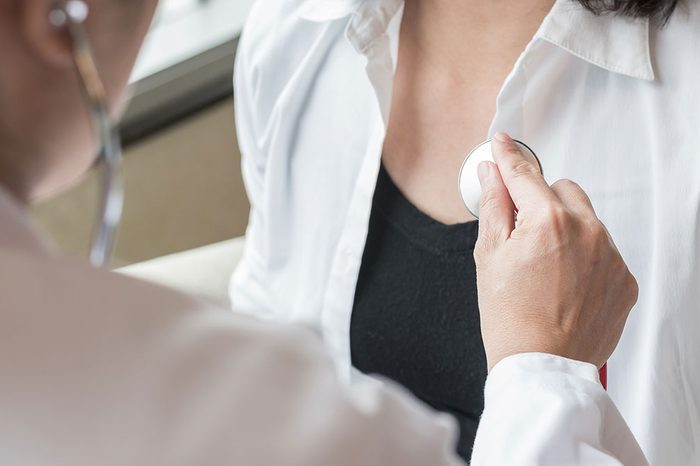
7. What else should be done if your readings are high?
Any hypertension readings should trigger a careful medical history and tests to investigate other risk factors, such as blood or urine tests for cardiovascular disease, diabetes, kidney damage, gout and arthritis. Also, a careful family history should be taken. The higher your risk factors for cardiovascular disease, the more important it is to get blood pressure into the normal range.
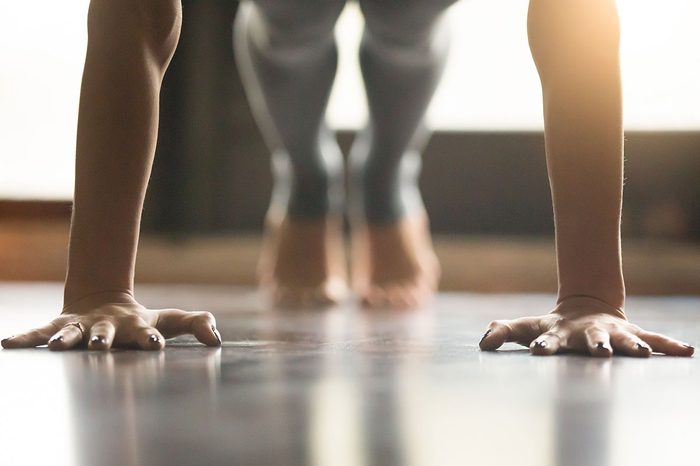
8. What lifestyle changes make a difference?
Five key behaviours can have a big impact on blood pressure: exercise four or five times a week, reduce alcohol consumption below two drinks a day for men and one for women, reduce salt consumption (particularly in processed foods), maintain a healthy weight and increase fruit and vegetable intake. Stopping smoking and managing stress are also essential. Recent studies are also suggesting that reducing sugar intake, even without weight loss, can improve blood pressure. “Anything that can be achieved through lifestyle is going to have beneficial effects on other health risks too, such as cancer,” says Dr. Hanley, who usually gives patients with mild to moderate hypertension about three months to try lifestyle modifications first before starting drugs.
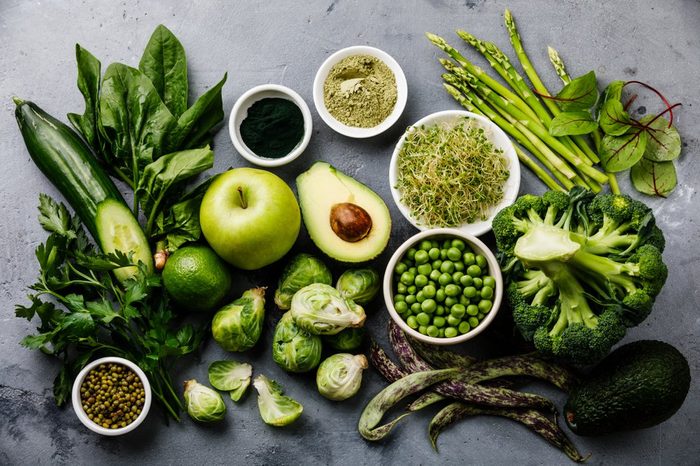
9. Is it ever too late to make lifestyle changes?
No. During the past year Karen Smith, 59, from Lincolnshire, UK, made numerous changes when she retired from teaching. She joined Weight Watchers and cut out cakes, cookies, bread, pasta and excess sugar. She cut out alcohol during the week. She ate more fruit, vegetables and lean protein. She also got more exercise, walking daily. Not only did she lose 16 kilograms, she had much better sleep, mood and energy. And best of all her high blood pressure, for which she had been on medication for more than a decade, came down into the optimal range on the lowest dose possible. “My doctor thinks that if I keep up this lifestyle, he may be able wean me off my blood pressure drugs completely,” she says. Unless you have a major change in lifestyle, you will need to take medication for life.
That can be difficult, acknowledge experts like professor Touyz. “Patients become really apathetic to taking medication daily for life. That’s why it is so important to have regular contact with your doctor and regular motivation by health care providers. ” The consequences of uncontrolled hypertension can be dire. According to 2012 statistics by the European Society of Cardiology, stroke is the second single most common cause of death in Europe, accounting for almost 1.1 million deaths each year. Over one in seven women (15 percent) and one in ten men (10 percent) die from the disease. Hypertension is the leading risk factor for stroke. (Here’s some other signs of a stoke you might be ignoring.)
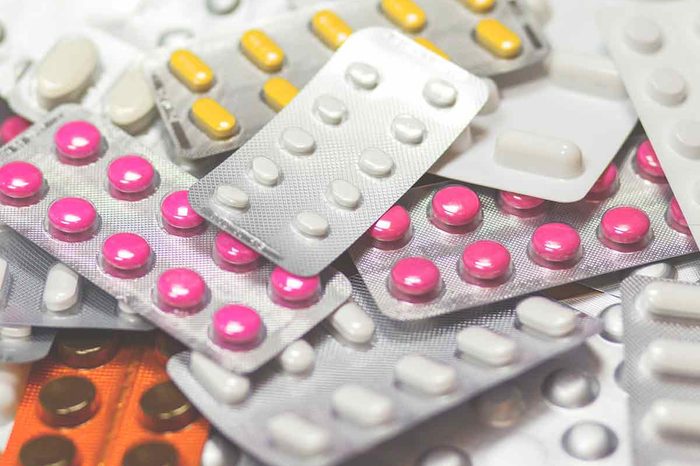
10. If I take medication, will there be side effects?
So many types of medication are now available that everyone should be able to find the drug, or combination, that controls blood pressure with minimal to no side effects, notes professor Fagard. Some hypertension drugs may cause diarrhea or other gastrointestinal problems. For example, olmesartan (an angiotensin receptor blocker, or ARB, trade names Benicar, Azor or Tribenzor) has been associated with celiac-like changes to the intestine. Tell your doctor about any side effects and he or she will work with you to find the best medication. Sometimes it takes quite a bit of work.
Minna Ilonen, a 42-year-old Finnish kindergarten teacher, had slight hypertension during each of her seven pregnancies and so bought herself a home monitor. In September 2013 she noticed an increase and went to the doctor who found her blood pressure was 171/108, dangerously high. She was started on an ARB, but developed an unrelated cluster of blood vessels in her brain that was slowly bleeding, making it imperative she get her blood pressure under control. After hospitalization and drug switches and dosage adjustments she finally got it down to 130/80. Since December 2013 she has been on a beta blocker and a combination pill that includes a diuretic, ARB and calcium channel blocker. Now her life is back to normal. “We’ve made progress in controlling high blood pressure in Europe, but we still have a long way to go,” says professor Kahan. “With more educated and motivated patients we can greatly reduce chronic diseases and deaths.”
Now that you know how to get your blood pressure under control, next check out the healthiest habits to adopt today.
